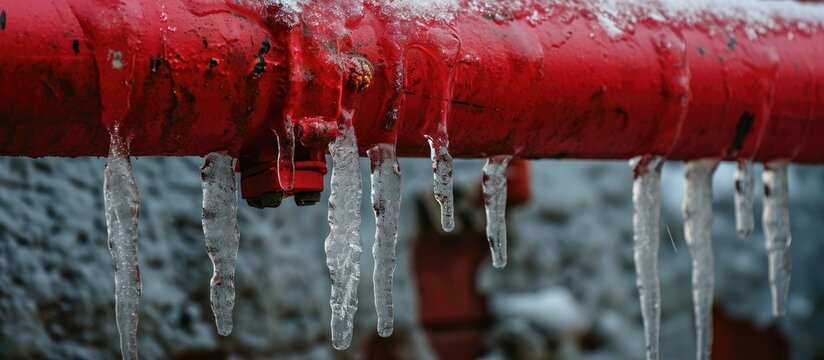Protecting Against Frozen Plumbing in Cold Weather: Essential Advice
Protecting Against Frozen Plumbing in Cold Weather: Essential Advice
Blog Article
Were you in search of tips involving How To Avoid Freezing Pipes?

Cold weather can wreak havoc on your plumbing, especially by freezing pipes. Right here's exactly how to avoid it from happening and what to do if it does.
Introduction
As temperatures decrease, the danger of frozen pipelines boosts, possibly leading to costly repair services and water damages. Comprehending exactly how to prevent icy pipes is vital for homeowners in cool climates.
Recognizing Icy Pipelines
What causes pipes to ice up?
Pipelines freeze when subjected to temperatures listed below 32 ° F (0 ° C) for extended durations. As water inside the pipes freezes, it expands, putting pressure on the pipe walls and potentially causing them to break.
Threats and damages
Icy pipes can lead to water system disturbances, home damage, and pricey repairs. Ruptured pipes can flooding homes and create substantial architectural damages.
Signs of Frozen Water Lines
Identifying frozen pipes early can prevent them from breaking.
How to determine frozen pipes
Look for decreased water circulation from taps, unusual odors or noises from pipes, and noticeable frost on revealed pipelines.
Prevention Tips
Shielding susceptible pipes
Cover pipes in insulation sleeves or utilize warmth tape to protect them from freezing temperatures. Concentrate on pipes in unheated or external locations of the home.
Heating strategies
Maintain interior areas adequately heated, specifically areas with plumbing. Open up closet doors to permit cozy air to circulate around pipes under sinks.
Safeguarding Outside Pipes
Garden hoses and outdoor faucets
Separate and drain yard hoses prior to wintertime. Mount frost-proof spigots or cover outside faucets with protected caps.
What to Do If Your Pipelines Freeze
Immediate actions to take
If you believe frozen pipelines, keep faucets open up to relieve stress as the ice thaws. Make use of a hairdryer or towels taken in warm water to thaw pipes gradually.
Long-Term Solutions
Architectural changes
Take into consideration rerouting pipelines away from outside wall surfaces or unheated areas. Add extra insulation to attic rooms, cellars, and crawl spaces.
Updating insulation
Invest in high-quality insulation for pipes, attics, and walls. Correct insulation helps keep regular temperature levels and decreases the risk of icy pipes.
Conclusion
Stopping icy pipelines calls for positive steps and quick actions. By comprehending the reasons, indicators, and preventive measures, homeowners can secure their plumbing throughout winter.
5 Ways to Prevent Frozen Pipes
Drain Outdoor Faucets and Disconnect Hoses
First, close the shut-off valve that controls the flow of water in the pipe to your outdoor faucet. Then, head outside to disconnect and drain your hose and open the outdoor faucet to allow the water to completely drain out of the line. Turn off the faucet when done. Finally, head back to the shut-off valve and drain the remaining water inside the pipe into a bucket or container. Additionally, if you have a home irrigation system, you should consider hiring an expert to clear the system of water each year.
Insulate Pipes
One of the best and most cost-effective methods for preventing frozen water pipes is to wrap your pipes with insulation. This is especially important for areas in your home that aren’t exposed to heat, such as an attic. We suggest using foam sleeves, which can typically be found at your local hardware store.
Keep Heat Running at 65
Your pipes are located inside your walls, and the temperature there is much colder than the rest of the house. To prevent your pipes from freezing, The Insurance Information Institute suggests that you keep your home heated to at least 65 degrees, even when traveling. You may want to invest in smart devices that can keep an eye on the temperature in your home while you’re away.
Leave Water Dripping
Moving water — even a small trickle — can prevent ice from forming inside your pipes. When freezing temps are imminent, start a drip of water from all faucets that serve exposed pipes. Leaving a few faucets running will also help relieve pressure inside the pipes and help prevent a rupture if the water inside freezes.
Open Cupboard Doors
Warm your kitchen and bathroom pipes by opening cupboards and vanities. You should also leave your interior doors ajar to help warm air circulate evenly throughout your home.

As an enthusiastic person who reads about How to Prevent Your Pipes From Freezing, I figured sharing that article was essential. Liked our post? Please share it. Let other people discover it. I praise you for being here. Come back soon.
Schedule A Service Report this page